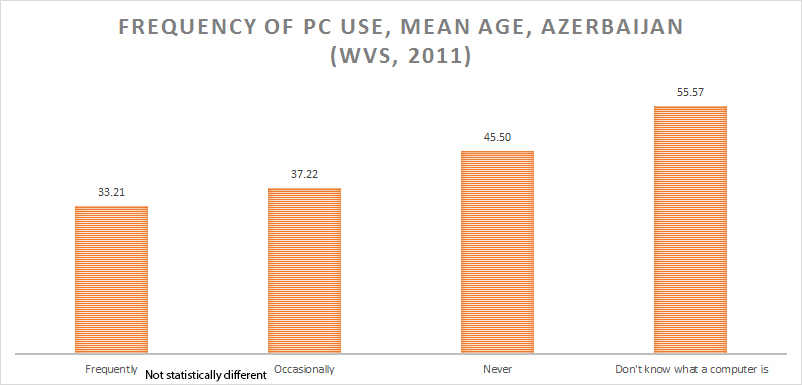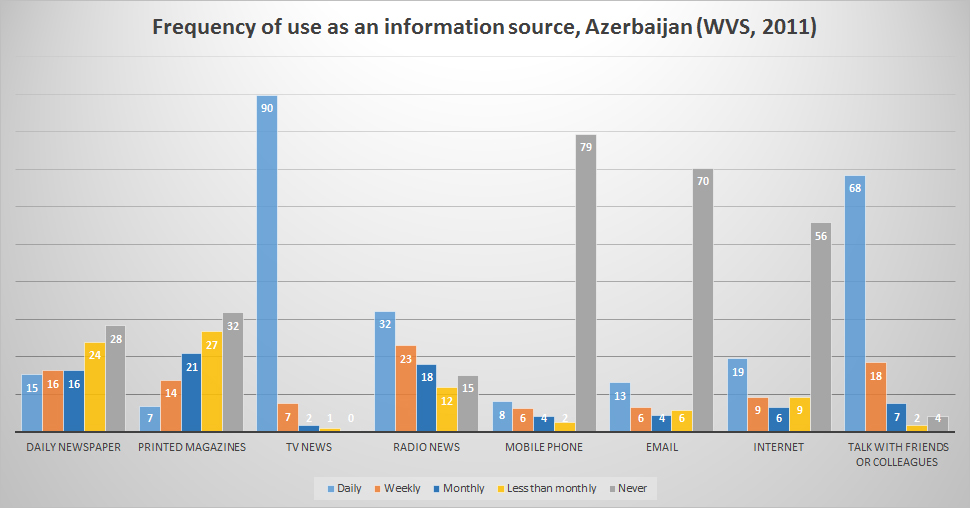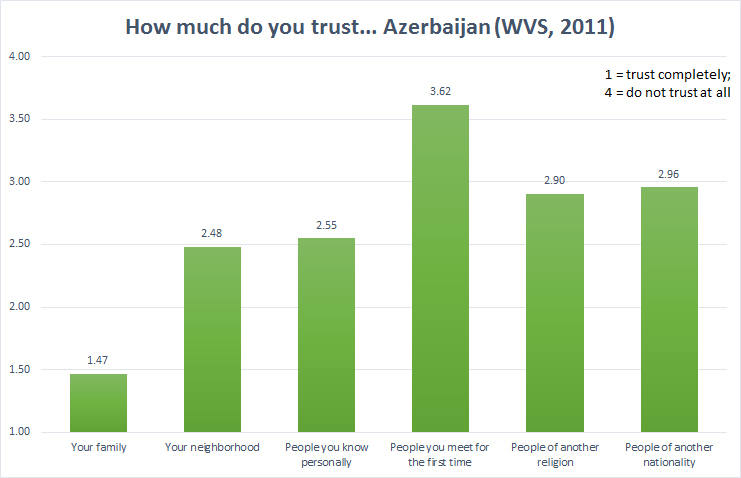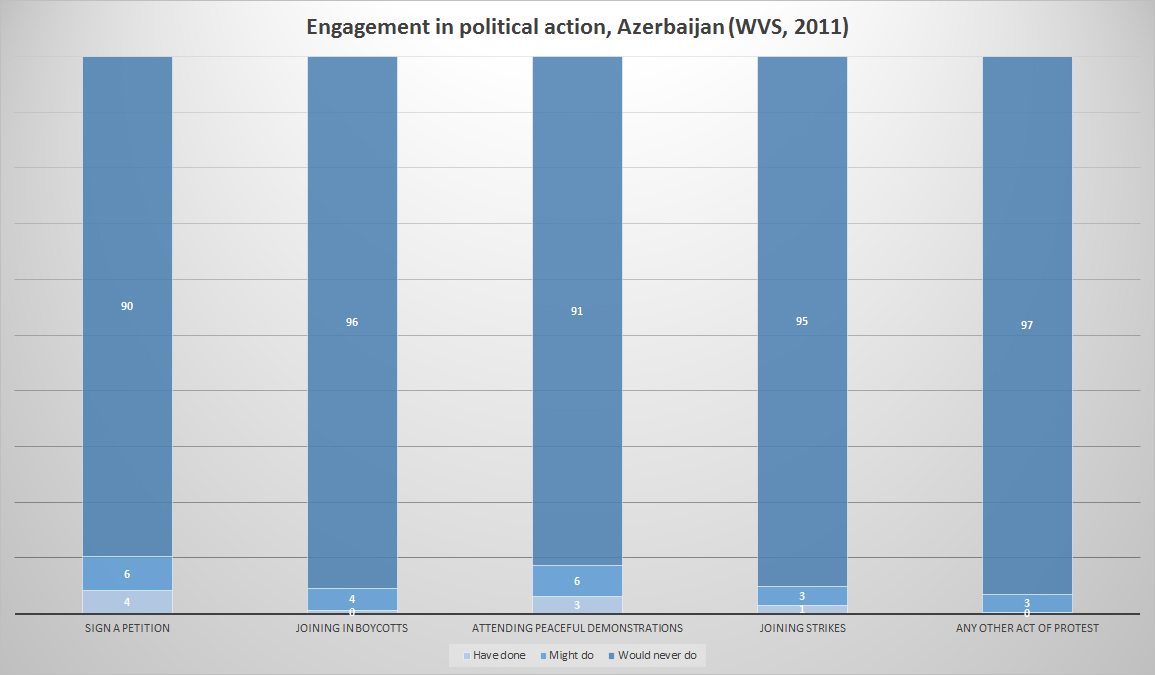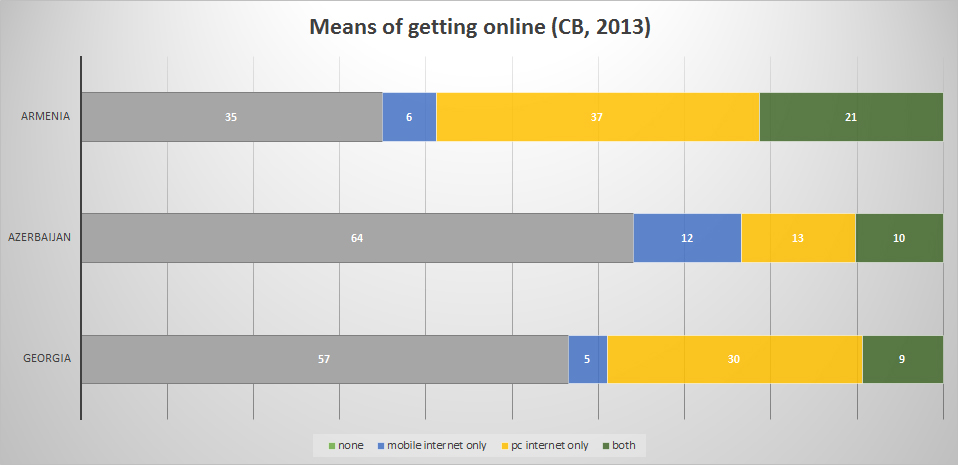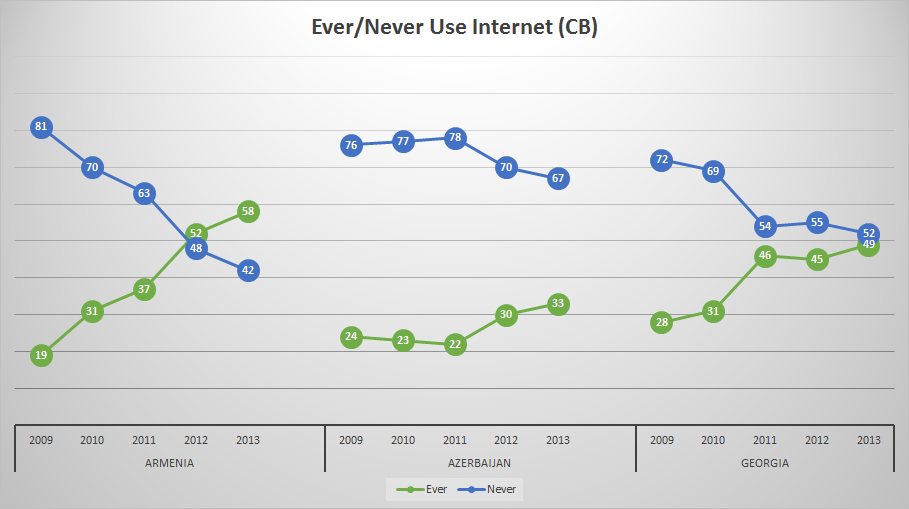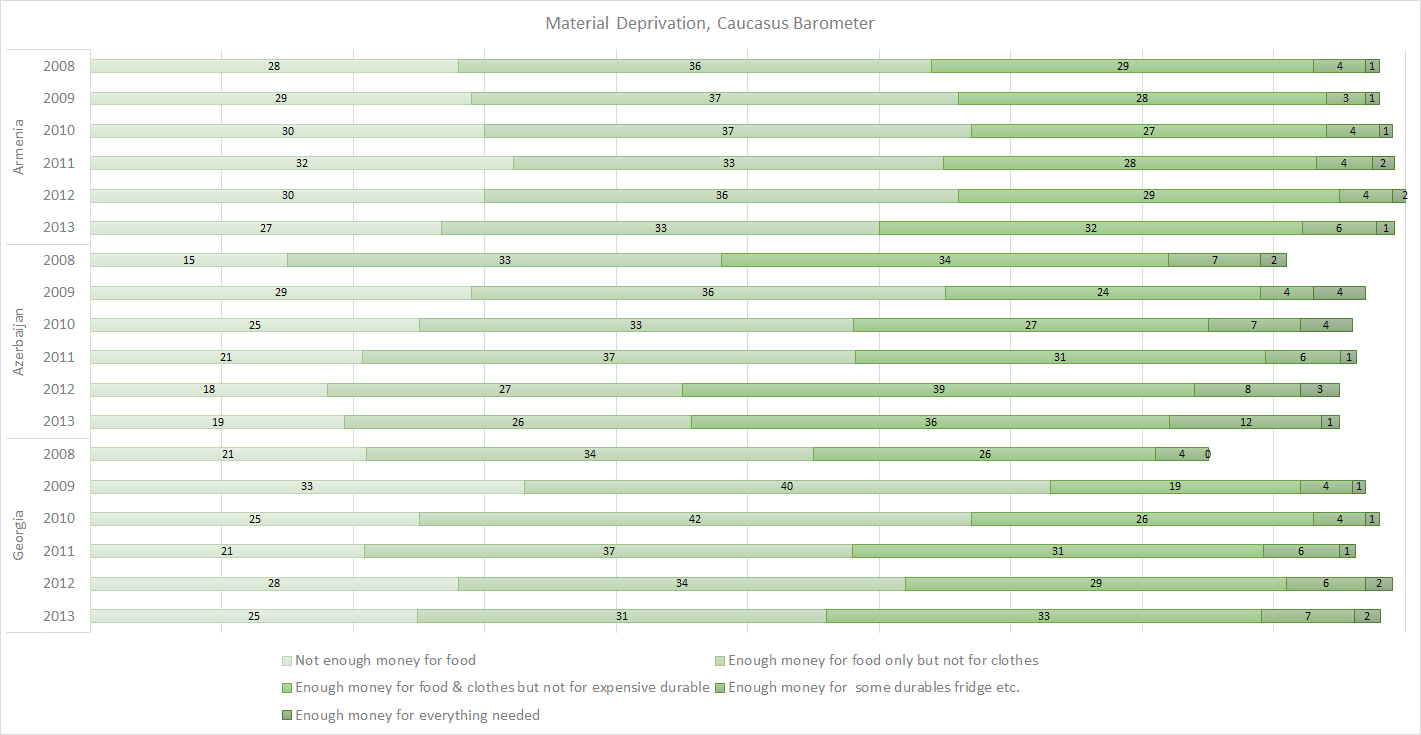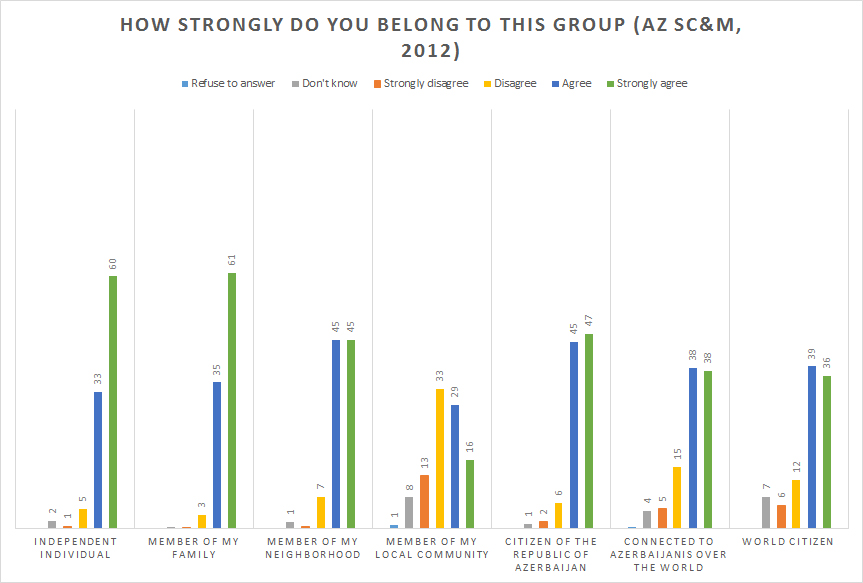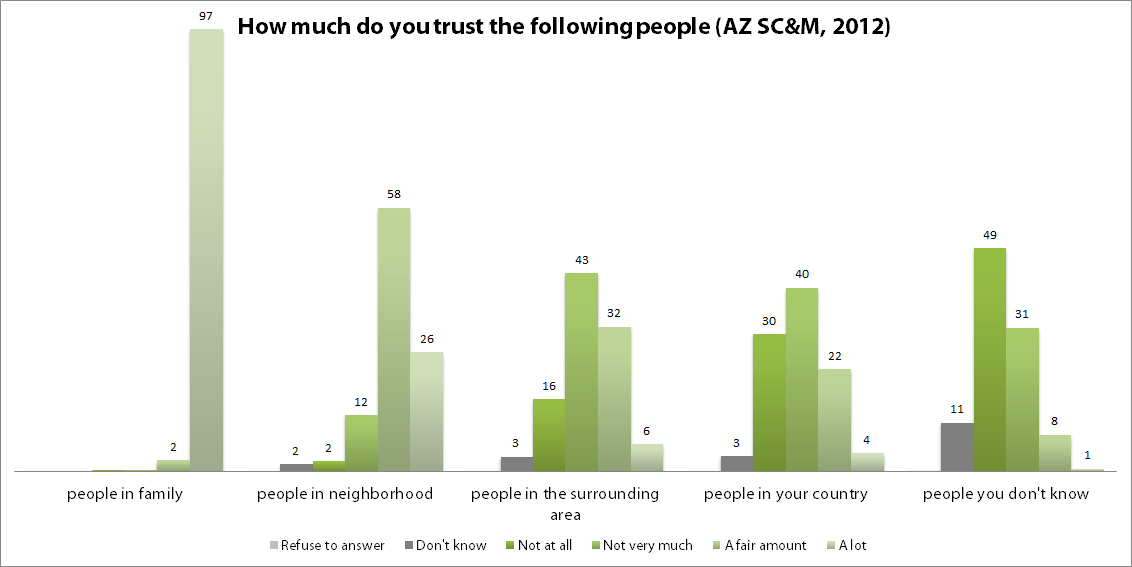The World Values Survey is a large international survey, conducted every few years with a variety of cooperating organizations. In their words: it “is a global research project that explores people’s values and beliefs, their stability or change over time and their impact on social and political development of the societies in different countries of the world.” This wave included Armenia and Azerbaijan and they hadn’t been done in years, so I was very happy.
Most of the time they do a pretty good job measuring things. Sometimes I don’t LOVE their measures, but what can you do? Also the media use measures are far too limited for my work, so I don’t really use this too much professionally. But I will do some analysis on my blog for fun.
Note: there is an online data analysis tool, check it out!
The methods information is available here, but here is the information for the Caucasus.
In Armenia, conducted by CRRC, the data for this wave was collected in 2011 and is weighted against demographics. The sampling plan, gathered from the electricity lists, was:
The stratified two stage cluster sample using PPS methodology was employed, using the following stages:
(a)Stratification: The approach of stratification of households (and, correspondingly, their members: respondents) by the regions/marzes of the country was applied to design the sample. The stratification is being considered as preferable option, as it allows ensuring representation of all heterogeneity of objective social, economic, cultural and other characteristics of the sampling units located in different geographic areas/regions of the country. At the same time, it ensures quite internal homogeneity of the aforementioned characteristics within each stratum. Therefore, all households in the sample frame were devised into 11 strata by the regional criterion (Capital – Yerevan and 10 regions/marzes). At the same time, in each stratum the second level of stratification was carried out: urban and rural, in order to obtain the urbanrural proportions of the households at the regional and country levels. The same principle of the PPS stratification was applied also within the capital: Yerevan. There are some 7 districts in Yerevan, which were determined as sub-strata within Yerevan and the total number of households in each district of Yerevan in the sample is proportional to the general distribution of the households by these sub-strata.Thus, in total there are 28 separate strata and sub-strata, of which the selection of primary sampling units (PSUs) was carried out at first.
(b) Clusters (PSUs). Two-stage cluster sampling method was applied to the survey sample design. At the first stage of sampling procedure, clusters (city blocks) of households formed based on the sample frame were selected using SRS (simple random sampling) method. Approximately equal sized clusters of households were selected in each stratum. (c)Households (SSUs). At the second stage of the sampling procedure the secondary sampling units, i.e. households (SSUs) were selected in each already selected cluster, using the SRS method. In each selected PSU 20 SSUs were interviewed.
(d)Respondents (FSUs). In each selected household (SSU) the respondent/FSU (h/h member in the age group of 18-85) was selected using the recent birthday method.
For Azerbaijan, the data was collected by the International Center for Social Research and the data was collected in December 2011. Ages 18+.
Here’s the sampling plan:
11 economic regions of Azerbaijan were identified as initial strata. 100 PSUs were randomly selected with probability proportional to size of each strata, and then 12 persons were systematically selected in each PSU. The full list of election districts within each stratum were used for random selection of PSUs, and the full lists of voters within selected election districts were used for random selection of respondents. Both election districts (PSUs) and voters (respondents) were selected from the lists published on the official website of Central Election Commission of Azerbaijan (http://www.infocenter.gov.az ).
Thus, two-stage area probability sampling was applied:
(1) At the first stage – random selection of 100 PSUs proportionally to size of each strata;
(2) At the second stage – random selection of 12 respondents within each PSU.



